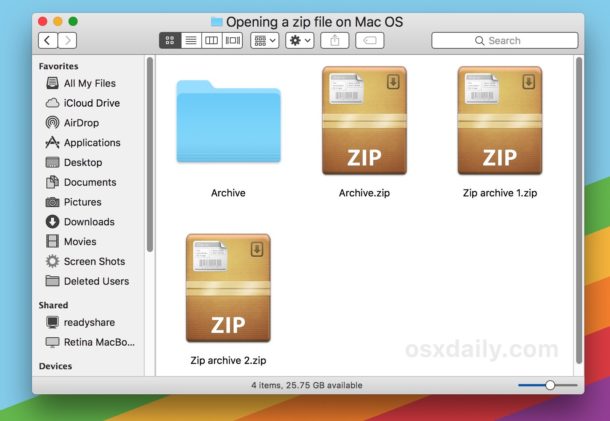Mac Sierra How To Set Default App For Zip
Resize Photos on Mac As mentioned above, you don’t really need a Photo Editing App to resize Photos, you can make use of the default Preview app on your Mac to resize photos. This method works for Photos located on the desktop and also for Photos located in. Jul 23, 2013 iFunia Photo-Resizer for Mac is a simple photo resizing tool that allows users to resize, rename the photos in a quick and easy batch mode. With it, users can easily adjust the size of photo by percentage, by height, and by aspect, or can even enter the custom size that wanted. App resize photo for web mac.

Restore Sierra.pkg (Free, available with Sierra Zone): If you are using a Mac to set up Sierra Zone, you need to Hackintosh Zone’s unique “Restore Sierra” app to write the disk image file onto your USB drive. Step 3: Change All Now that you’ve changed the default program for this file, the button for Change All is active. This button will set your Mac to use the selected application to open files of. Downloaded the macOS Sierra Installer from the Mac App Store. Hint: you can quickly find the new OS by using the search field within the Mac App store. Once the download of the macOS Sierra Installer completes, it will automatically launch the installer. The Mac opens data files (pics, sounds, docs) in applications automatically, but you can change which apps they use in a few simple steps. Change the Default Application a File Opens With on Your Mac.
Not tested and copied from a source I can't remember were or from who, sorry. # Setting Outlook as default Mail app. Thanks for the script. It did lead me in the right direction! During testing I found a few problems. $username isn't set anywhere.
For JAMF, this should be $3 2. There are 2 lines with extra 'com.apple.LaunchServices.plist' at the end. If you run the script (with username properly set) it will create an extra file which isn't used by anything and doesn't change anything. The add commands will all fail if the entries exist (which they most certainly will) I could have tested for the existence of each entry then acted accordingly, but since we just want to overwrite them anyway, it was simpler to delete,add each one. So, here is my script which has been tested on a few computers and successfully set Outlook 2016 to be the default mail app. (But I wouldn't call it thoroughly tested yet by any stretch.) Enjoy! B #!/bin/bash # clear old LaunchServices # DO NOT USE.
#/System/Library/Frameworks/CoreServices.framework/Versions/A/Frameworks/LaunchServices.framework/Versions/A/Support/lsregister -kill -r -all local,system,user # Set plist path ($3 = username) plistPath='/Users/$3/Library/Preferences/com.apple.LaunchServices/com.apple.launchservices.secure.plist' # Delete the LSHandlers array # DO NOT USE. #/usr/libexec/plistbuddy -c 'delete:LSHandlers' '$plistPath' >/dev/null 2>&1 echo 'Setting Outlook as default Mail app.' # Delete the entries in case they already exist. Suppress errors if entries do not exist. Your script looks good and it's changing the plist as designed. I rewrote it to scan for the most recently used email app and set that to the default. Problem is that launchServices doesn't appear to be reading this plist.
2007 Sierra How To Set Timer
It does save data there if I change via Apple's Mail preferences. I've done the lsregister -kill -r command to rebuild launchservices database, but it still won't read in the new setting - even after multiple reboots and threats of reformatting. If you come up with a way for the Mac to actually read this setting, I'd love to hear it. Yes - I'm running it on 10.12. Haven't seen any issues. Please post errors to the github issues tracker and I'll take a look. Also, here's a python script to set outlook as the default mailto handler.